Gamification Components and Design Principles
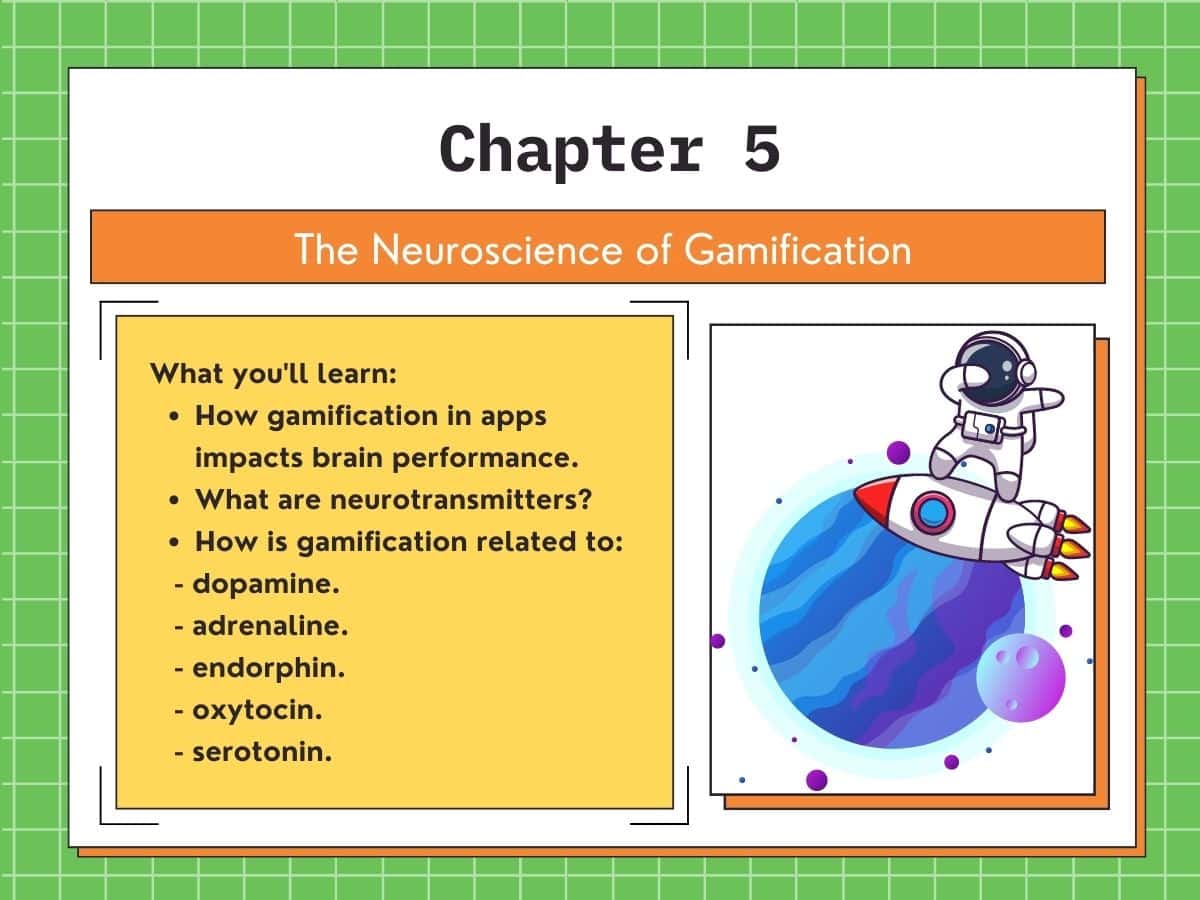
Discover the essential gamification components, including fun, game mechanics, and dynamics. Learn about the critical design rules and different types of players/gamers in gamification.

Chapters
You are in Chapter 6 of the Beginner’s Gamification Guide.
In our previous discussions, we explored the definition of gamification, serious games, and the leading theories of motivation and their impact on brain chemistry.
Now, it’s time to examine why we gamify.
This chapter covers the starting point of designing a gamification solution and outlines the critical rules to consider in your strategy.
Additionally, we’ll uncover the existence of different types of game players and delve into the game components, mechanics, and dynamics that make up a successful gamification approach. Let’s get started!
Boredom is a familiar feeling when faced with a tedious task, just as children and teens often find their least favourite subjects in school “boring.”
This lack of interest and motivation also affects us when learning new skills or tackling complex tasks, leading to the brain’s “off” state. Fortunately, gamification can turn it “on.”
To gamify a task, think like a game designer and consider the elements that create fun in your favourite games. What are the rules and goals, risks, feedback and rewards, and challenges?
Gamification is making tasks more engaging and fun by incorporating game design elements. The goal is to increase motivation and engagement in a task that may otherwise be perceived as boring or tedious.
The key features of gamification include the following:
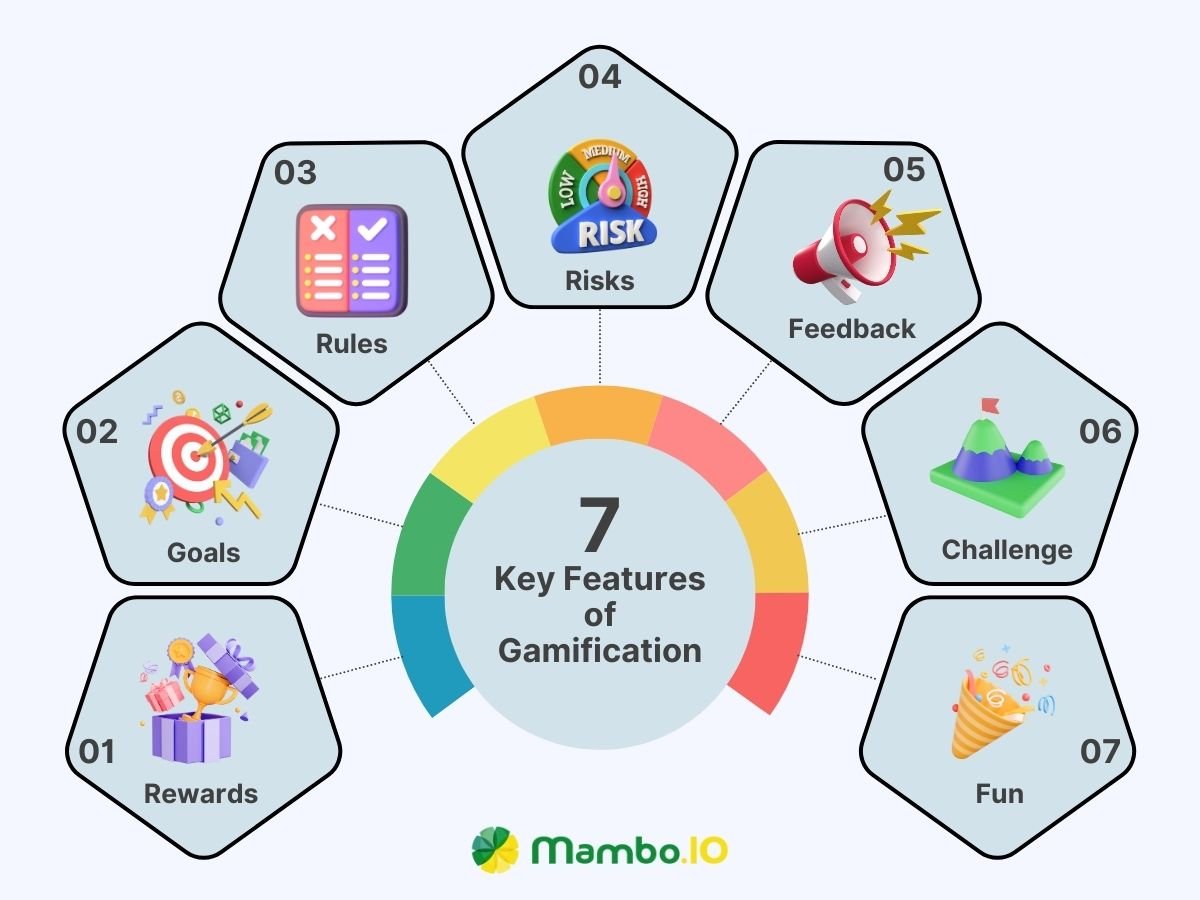
- Rewards: Frequent rewards, such as badges, points, and status, provide immediate gratification and keep the player motivated to continue.
- Goals: Having clear goals allows the player to keep track of their progress and determine the winner.
- Rules: Consistent rules help to keep things predictable and create a sense of structure.
- Risk: Adding a level of risk to the task increases focus and requires the player to think strategically.
- Feedback: Regular feedback allows players to assess their progress and adjust their strategy accordingly.
- Challenge: Balancing the level of challenge is essential to keep the player interested and engaged.
- Fun: Including an element of fun is a crucial aspect of gamification and can increase intrinsic rewards.
Incorporating these elements into a task can be transformed into a more engaging and enjoyable experience, increasing motivation and participation. And this is what everybody is looking for!
Gamifying Progress: Tips for thinking like a game designer
Gamifying your progress can help you stay motivated and focused when working towards a long-term goal.
To do this, you can:
- Break the goal into smaller, manageable tasks and set milestones for yourself.
- Celebrate each milestone with a reward to keep yourself motivated.
- Visualise and track your progress through tools like progress bars, countdown timers, and experience points (XP).
For example, let’s suppose your goal is to buy your first house.
It’s a good idea to break down the process into smaller tasks, such as saving money, researching mortgages, and searching for properties.
You can use a countdown timer to track the time until your target move-in date can add a sense of urgency and drive you to take action.
Some experience points (XP) can serve as a feedback mechanism and track your progress towards your goal.
The more you work towards your goal, the more XP you earn.
You can also use the “earned lunch” technique. The “earned lunch” reward is a simple and effective way to motivate people towards a specific goal or task. It works by linking the completion of a desired action with a tangible reward, such as a lunch break.
The idea is that people are more likely to remain focused and motivated to complete the task by earning a bonus through their actions.
Creating a clear and tangible connection between effort and reward is exciting because it encourages people to stay committed and motivated.
Additionally, the reward is immediate, providing a sense of accomplishment and satisfaction and motivating people to continue working towards their goals.
By incorporating these game elements into your progress, you can keep yourself motivated and focused on your goal. Isn’t it nice to transform long-term projects into more fun and engaging experiences?
Remember! Gamification is not just about adding a few game elements to your tasks.
It’s about designing an engaging and rewarding experience for the users. Gamification can involve many components, including feedback, points, levels, leaderboards, challenges, quests, and more.
In reality, 108 gamification components enhance the user experience. These components motivate and engage users, increase participation, and encourage specific behaviours.
You can visit this article on “Gamification Elements and Mechanics” to learn more about gamification components. This article provides an in-depth look at the various gamification elements and mechanics to apply in different contexts.
[et_bloom_inline optin_id=”optin_4″]
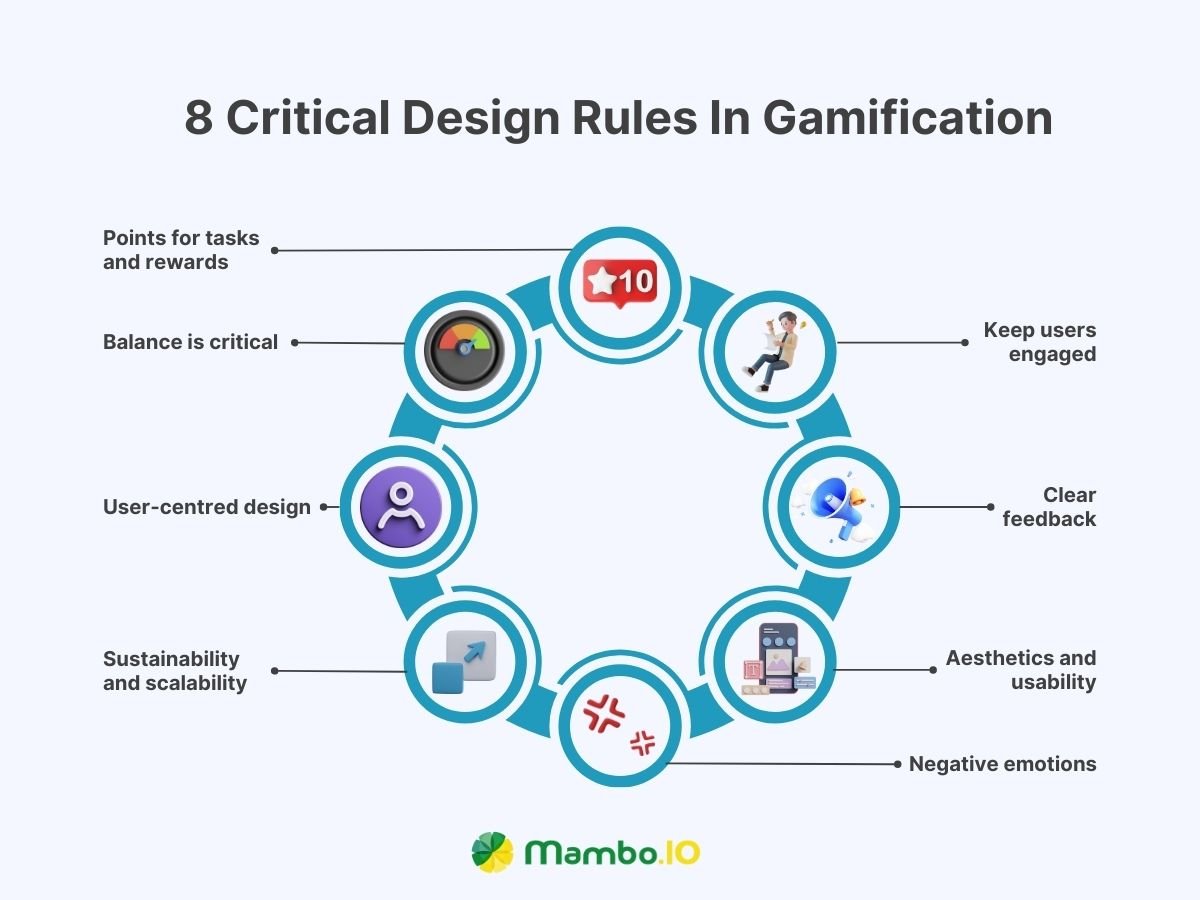
#1. Points for tasks and rewards
Achieve motivation to complete important but unpleasant tasks by creating a point system.
Start by making two lists, one for the unpleasant tasks and another for your desired rewards.
Assign points to each task, giving higher point values to more significant or tedious tasks. The more valuable the prize, the more points you’ll need to trade for it, making task completion even more rewarding.
By linking unpleasant tasks to this point system, you’ll be motivated to complete them in exchange for your desired rewards.
#2. Balance is critical
For a game to be successful, it must be balanced. This means it should be easy enough, with the correct number of choices but not too few.
The game must also provide a level of competition where either player has a chance to win. Balancing the game is essential at every stage to ensure that it remains engaging and fun for players.
This can be challenging because players are real people, and their actions may impact the game’s balance. Play-testing is crucial in maintaining balance, as a game that becomes imbalanced quickly loses its fun factor for players.
#3. User-centred design
The gamification design should always put the user at the centre, considering their needs, preferences and behaviours. The design should be focused on meeting the users’ goals, providing them with a sense of control, autonomy, and purpose.
#4. Sustainability and scalability
The gamification design should be sustainable, allowing users to continue playing the game more extendedly. It should also be scalable, allowing for future growth and expansion.
#5. Negative emotions have a purpose in gamification
Gamification can benefit from positive emotions, such as accomplishment, self-esteem, and confidence, and negative emotions, such as the Zeigarnik effect, procrastination, and anxiety.
Completing a task often elicits positive emotions, providing satisfaction and pride.
However, negative emotions can also play a role in motivating change. The Zeigarnik effect, discovered by psychologist Bluma Zeigarnik, states that unfinished or interrupted tasks are better remembered than completed tasks. These tasks can result in feelings of anxiety and drive the need to finish what was started.
Gamification elements, such as levels, points, progress bars, and leaderboards, can help users visualise their progress and motivate them to work harder to achieve their next goal.
These tools can be particularly useful in overcoming procrastination.
#6. Aesthetics and usability
The gamification design should be aesthetically appealing and user-friendly. It should have a clear and intuitive UI. So it is easy for the user to navigate and understand the game mechanics.
#7. Clear goals and feedback
Gamification should have clear goals and provide meaningful feedback to the user. Feedback should be immediate, specific and actionable, helping users understand their progress and guiding them towards their desired outcomes.
#8. Keep users engaged with interest, attention and fun
To generate interest, attention, and fun, aim for a mix of entertainment, challenge, intrigue, escape, story, competition, discovery, and social interaction.
This formula will engage users effectively.
The 4Keys2Fun theory
For insights on what makes things fun, look to the 4Keys2Fun theory developed by game designer Nicole Lazzaro, who has created games such as Tilt, Myst, Sims, and Star Wars Force Unleashed.
Nicole breaks fun into four categories:
- Easy Fun (Novelty) – casual, light, and fun from exploration, role play, and creativity.
- Hard Fun (Challenge) – excitement from accomplishing difficult goals.
- People Fun (Friendship) – amusement from competition and cooperation with others.
- Serious Fun (Meaning) – excitement from changing oneself and the world through meaningful activities such as giving to others, collections, and unlocking awards.
In this video featuring Nicole, discover more about creating profound emotional experiences through design:
Mark LeBlanc’s 8-Category Framework of Fun
Mark LeBlanc, a game designer, developed a framework that divides fun into eight categories. These categories are:
- Sensation: fun derived from senses (e.g. touch, auditory, visual) – games like Candy Crush, Warhammer, Telltale Games
- Fellowship: enjoyment through shared experience (e.g. World of Warcraft, One Night Werewolf)
- Challenge: fun from overcoming obstacles (e.g. League of Legends, Street Fighter, basketball)
- Fantasy: living out a game experience (e.g. Legend of Zelda, Dungeons and Dragons)
- Narrative: experiencing a story (e.g. Telltale Games, Lego Star Wars)
- Discovery: exploring and discovering new content (e.g. God of War, Legend of Zelda Breath of the Wild)
- Expression: showcasing creativity (e.g. Minecraft, League of Legends)
- Submission: relaxed task completion (e.g. Slot machine games, Stardew Valley)
This framework is a slightly different approach from what Lazzaro talked about previously.
When designing a gamified experience, identifying player types is essential. The Bartle Test of Psychology classifies players into four categories to help with this.
Bartle’s player types model for gamification
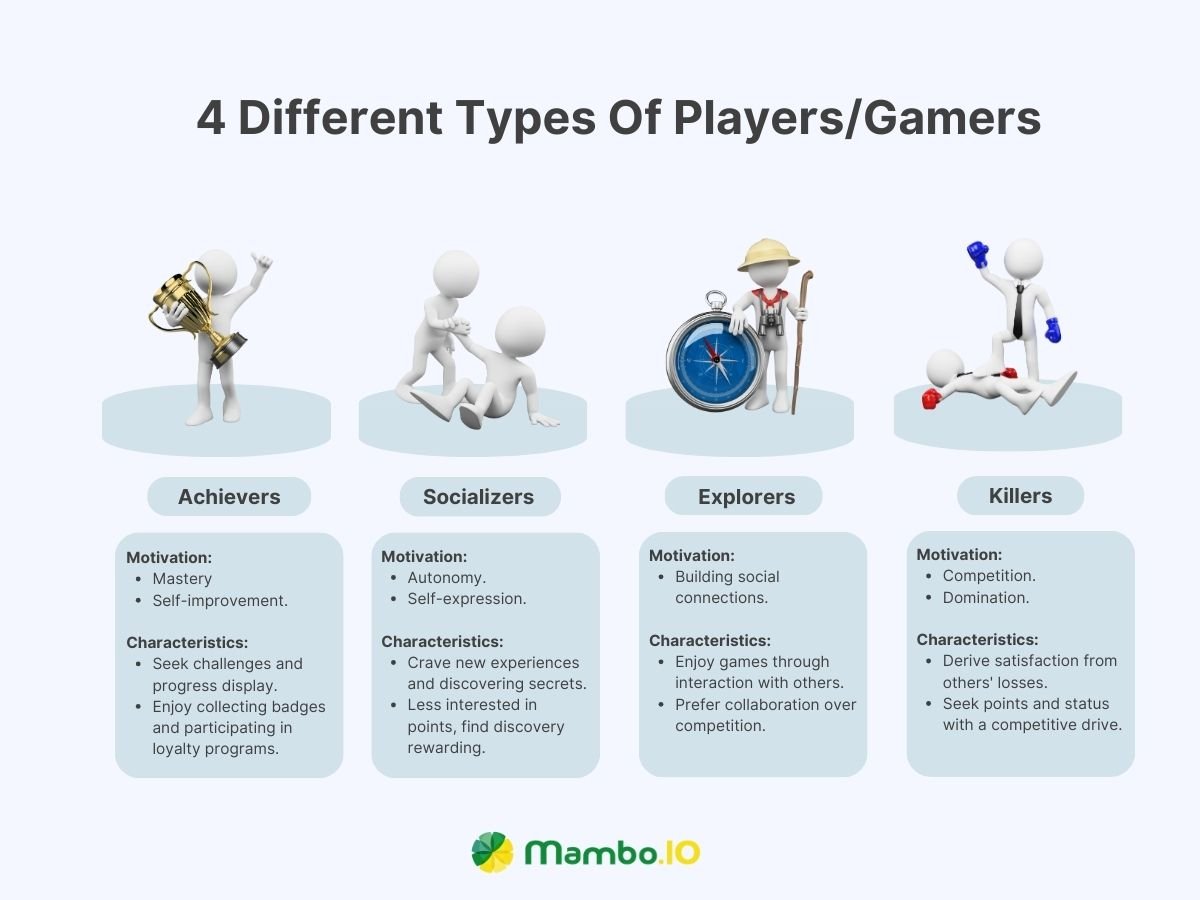
#1. The achievers:
Motivated by Mastery, they look to learn and improve themselves. They seek challenges to overcome and display their progress to friends.
Achievers love collecting badges and enjoy incentive schemes, like loyalty programs, where each additional point earned is an achievement.
Bartle estimates that 10% of people are Achiever types.
You probably know several Achievers – they boast about using shortcuts and love to show their progress.
#2. The explorers (free-spirits):
Motivated by autonomy and self-expression, they seek to discover and explore.
Explorers crave new experiences and uncover hidden secrets. They only care a little for points or rewards, as discovery is reward enough.
It’s impressive how they are content with repetitive tasks as long as they eventually lead to unlocking a new area of the game or reveal an “Easter Egg” – a small bonus within the game.
The surprise factor in a game excites explorers, and approximately 10% of players belong to this category.
#4. The killers
The Killers are competitive players who derive satisfaction from seeing others lose and strive to be the best in the game. Like Achievers, they seek points and status, but their competitive nature sets them apart. According to Bartle’s research, less than 1% of players fit into this category.
Important note:
Player types are not rigidly defined. Most people exhibit characteristics of multiple categories but usually have a dominant trait that determines their overall playstyle.
We recommend looking deeper into players’ motivations, behaviours and environment context to understand their preferences. The Bartle Test can provide insight into the dominant player type, but it’s best to determine it through surveys and observation.
Understanding the nature of your players’ working culture and goals is crucial to designing the proper mechanics and features to meet their needs.
For instance, leaderboards are more likely to be appreciated by Killers and Achievers, while Socializers and Explorers may not find them appealing. Knowing the Bartle Player Types of your players can make it easier to cater to their preferences.
When discussing gamification or game-based learning, terms like game elements, components, mechanics, and dynamics often come up. To understand them, it’s helpful to look at the hierarchy of game elements organised by Werbach and Hunter (2012).
Game elements consist of game components, mechanics, and dynamics.
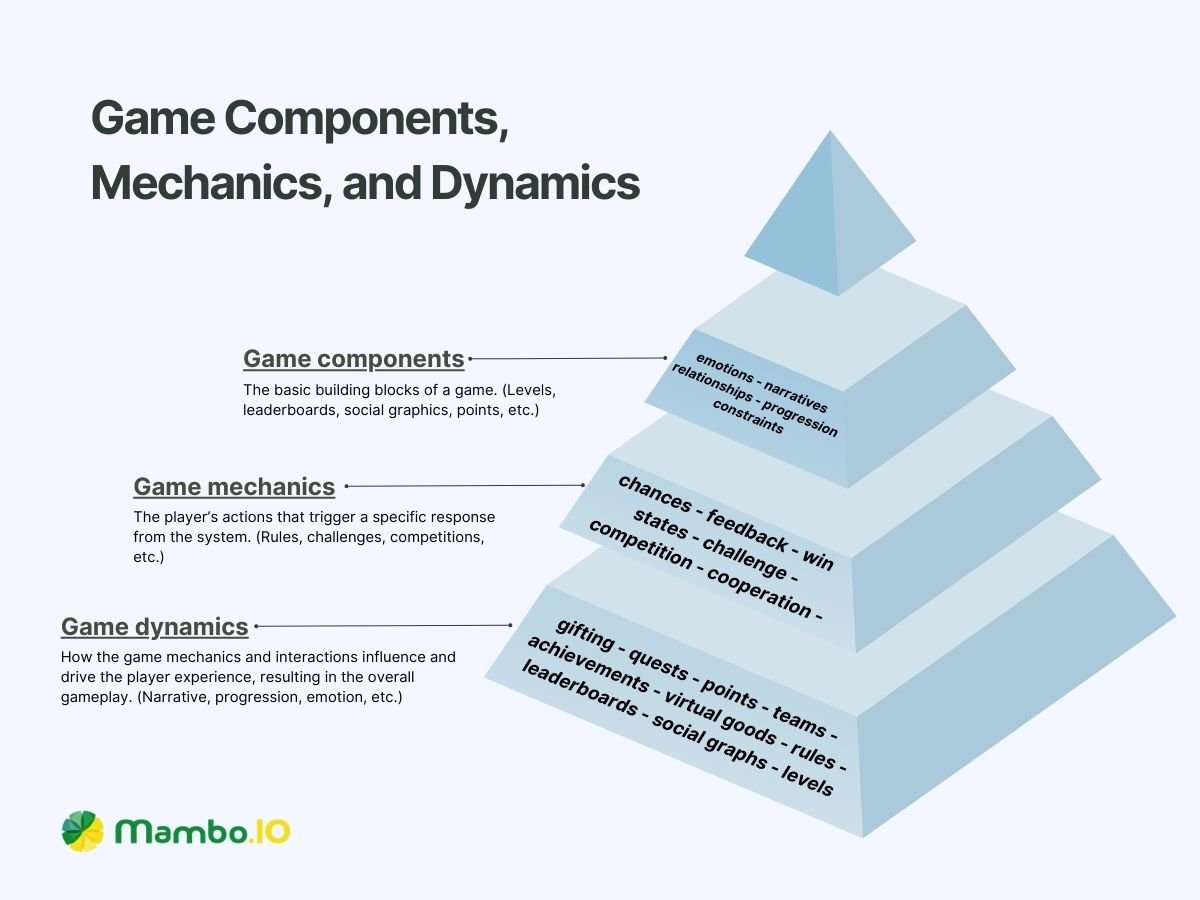
What are game components?
Game components are the basic building blocks of a game, such as levels, leaderboards, social graphics, points, etc.
What are the game mechanics?
Game mechanics refer to the player’s actions that trigger a specific response from the system, including rules, challenges, competitions, feedback, etc.
What are the game dynamics?
The game dynamics refer to how the game mechanics and interactions influence and drive the player experience, resulting in the overall gameplay – examples: the narrative, progression, emotion, etc.
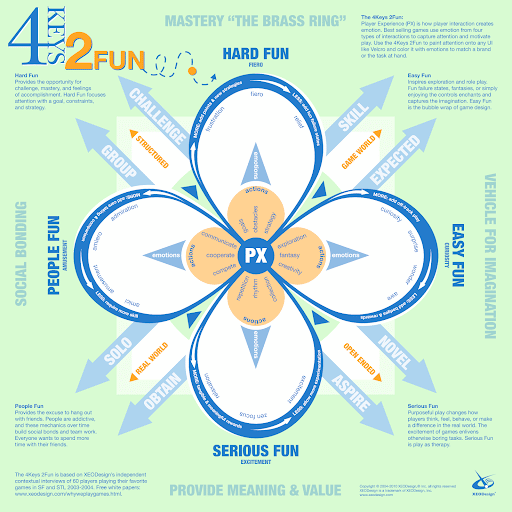
#3. The socializers
Motivated by relatedness, socialisers seek to interact with others and build social connections. They love to be part of a group!
Comprising almost 80% of gamers, socialisers find joy in games through their interaction with other players. They are willing to collaborate to achieve more significant outcomes than they could.
Socialisers are happy to help each other. Whether friends or acquaintances, socialisers value teamwork and see sense in joining forces. Though they don’t seek fierce competition, it doesn’t mean they lack ambition or are passive.